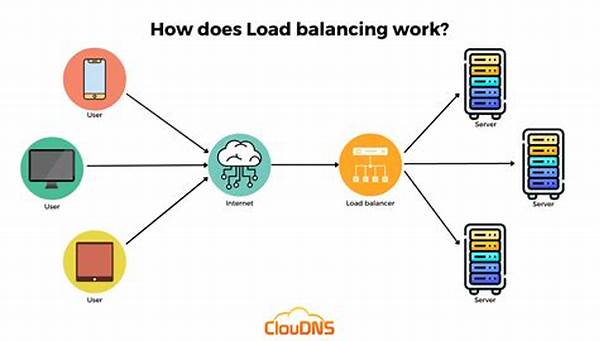Hey there, tech enthusiasts! Today, we’re diving into the intriguing world of load balancing in parallel systems. Whether you’re a seasoned computer science guru or a curious newbie, understanding how to optimize performance in parallel computing is an invaluable skill. So, grab your favorite beverage, and let’s unravel this fascinating concept together!
Read Now : Realistic Fear-inducing Graphics
The Basics of Load Balancing in Parallel Systems
Imagine you’re throwing a massive dinner party, and you’ve got a ton of dishes to prepare. You wouldn’t want all the work to pile up on one person, right? That’s where load balancing in parallel systems comes in! Essentially, it’s all about distributing tasks evenly across multiple processors to ensure everything runs smoothly and efficiently.
In parallel computing, if one processor gets bogged down with too much work, it can create a bottleneck, slowing the entire system down. Load balancing in parallel systems prevents this by ensuring that each processor in a system has an equal amount of work. This optimization is crucial because it maximizes the efficiency and performance of parallel systems, ensuring that no processor is left idling while others are overwhelmed. So, whether you’re rendering 3D graphics or running complex simulations, load balancing in parallel systems is the key to a seamless experience.
The Challenges of Load Balancing in Parallel Systems
1. Dynamic Workloads: Tasks can be unpredictable, making it tricky to evenly distribute them.
2. Communication Overhead: Moving tasks around comes with its own set of delays.
3. Processor Heterogeneity: Not all processors are equal, complicating task distribution.
4. Data Locality: Tasks may rely on data stored in different locations, causing delays.
5. Scalability Issues: As systems grow, maintaining balance becomes increasingly complex.
Strategies for Load Balancing in Parallel Systems
Let’s talk strategy! In the realm of parallel systems, various techniques are employed to achieve load balancing. Static load balancing assigns tasks to processors before execution, while dynamic load balancing adjusts tasks in real-time based on workload changes. Each method has its own pros and cons, and the choice depends on the specific needs of the application.
Static load balancing is great when workloads are predictable because it minimizes overhead and makes planning easy. However, in environments where tasks vary significantly, dynamic load balancing shines. It constantly monitors workloads and shifts tasks to prevent idling and overloading. Although dynamic strategies can introduce overhead, the performance gains they bring often outweigh the costs, especially in highly variable scenarios. Whichever method you choose, mastering load balancing in parallel systems is like having a superpower in the realm of computing!
The Impact of Load Balancing in Parallel Systems
When executed effectively, load balancing in parallel systems can transform computational efficiency. It ensures that resources are used to their fullest potential, cutting down on processing time and boosting overall system performance. Think of it as the secret sauce that keeps your computational engines running at optimal speed, no matter how heavy the workload.
1. Efficiency Boost: Equitable task distribution speeds up processes.
2. Reduced Downtime: Prevents processors from idling and wasting resources.
3. Enhanced Performance: Smooth workflow results in faster outcomes.
Read Now : Dynamic Player Interaction Techniques
4. Cost-Effectiveness: Maximizing resource utilization reduces operational costs.
5. Scalability: Efficient load balancing supports expanding systems.
6. Adaptability: Systems remain responsive to workload fluctuations.
7. Resource Utilization: Ensures all processors contribute effectively.
8. Reliability: Minimizes the risk of system overloads and crashes.
9. Energy Efficiency: Balanced loads mean less energy consumption.
10. User Satisfaction: Faster systems lead to happier users.
Emphasizing the Importance of Load Balancing in Parallel Systems
We’ve all experienced the frustration of a slow computer, and in complex systems, this frustration can become costly. Load balancing in parallel systems isn’t just about optimizing performance; it’s about ensuring reliability and user satisfaction. As systems grow in complexity, the significance of efficient load balancing becomes increasingly predominant.
Consider the energy savings alone. Balanced systems reduce power consumption, a significant advantage for larger data centers focusing on sustainability. Moreover, by ensuring that processors aren’t overtaxed or underutilized, you extend the lifespan of hardware—saving money and minimizing waste. In essence, mastering load balancing in parallel systems isn’t just a technical necessity; it’s an ethical and economic decision that enhances both user experience and operational efficiency.
Future Perspectives on Load Balancing in Parallel Systems
With the rapid advancements in technology, the future of load balancing in parallel systems looks promising. Emerging trends like machine learning and artificial intelligence are paving the way for more sophisticated balancing algorithms that can predict and adapt to changing loads with minimal human intervention.
Looking forward, a future where load balancing in parallel systems is driven by artificial intelligence might not be too far away. By leveraging AI, systems can anticipate workload changes and adjust preemptively, enhancing efficiency even further. This evolution holds exciting prospects for industries relying on heavy computational loads, from finance to healthcare, providing smarter, faster solutions with every innovation. So, stay tuned, because the evolution of load balancing in parallel systems is only just beginning.





